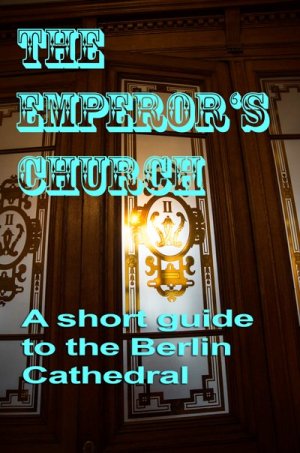The Berlin Cathedral
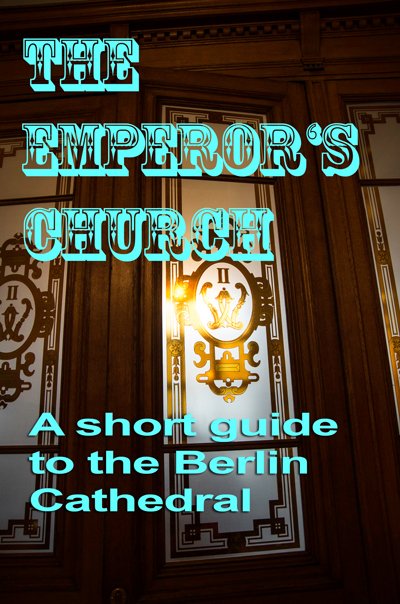
The emperor’s church
The MR although you couldn’t tell by just looking at it. Visitors often mistake it for a catholic place of worship due to the overabundance of decorative elements. The other common misconception considers its age. On our Sightseeing tours, like Berlin’s Best we sometimes ask what our guests think from which period it is. Even the smartest and most educated guesses nearly never come close. Most think it was built around the same time as the opera or Humboldt university, since it looks rather baroque. In fact it is just over a 100 years old, consecrated in 1905. In a way it is an early example of retro-architecture, but instead of referring to the ideals of antiquity like classicist Altes Museum just across the street it hearkens back to the time of Frederick the Great and the era in which Prussia went from a backwater fiefdom of disciplined soldiers to a European super-power in the 2nd half of the 18th century.

A drawing of one of the cathedral’s predecessors from 1736
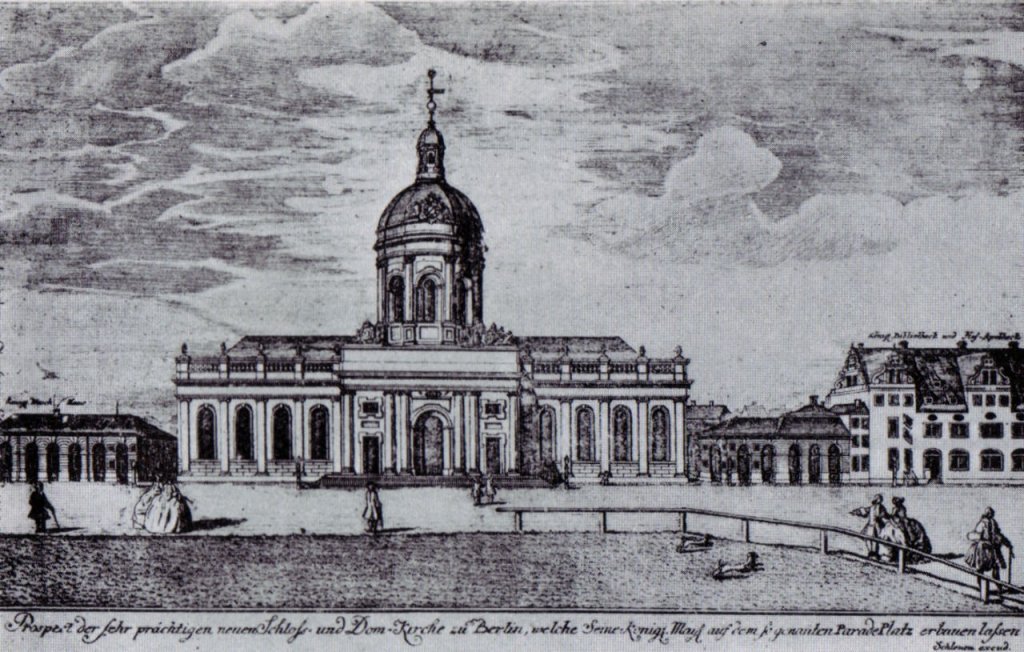
Knobelsdorff church around 1736
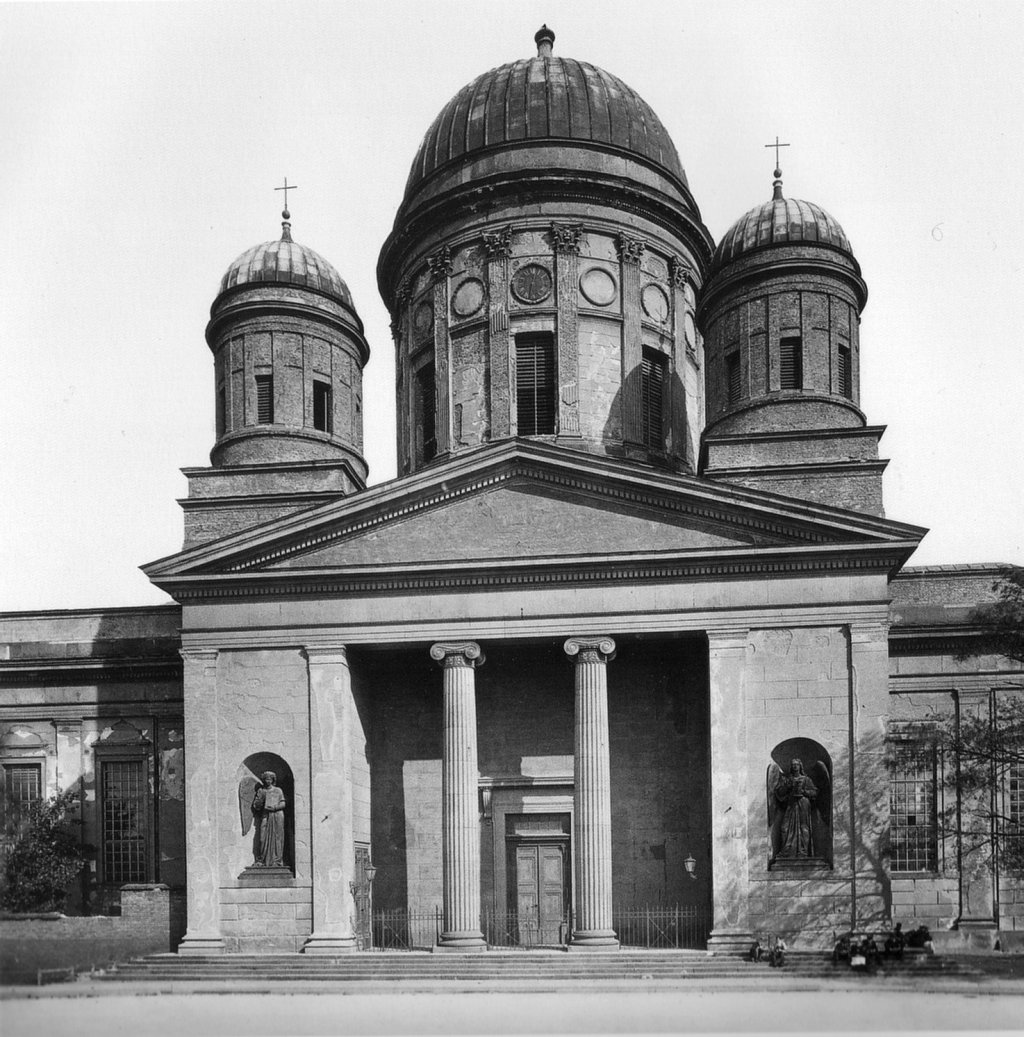
This was what the cathedral looked like before the current look, Schinkel’s design (around 1892)
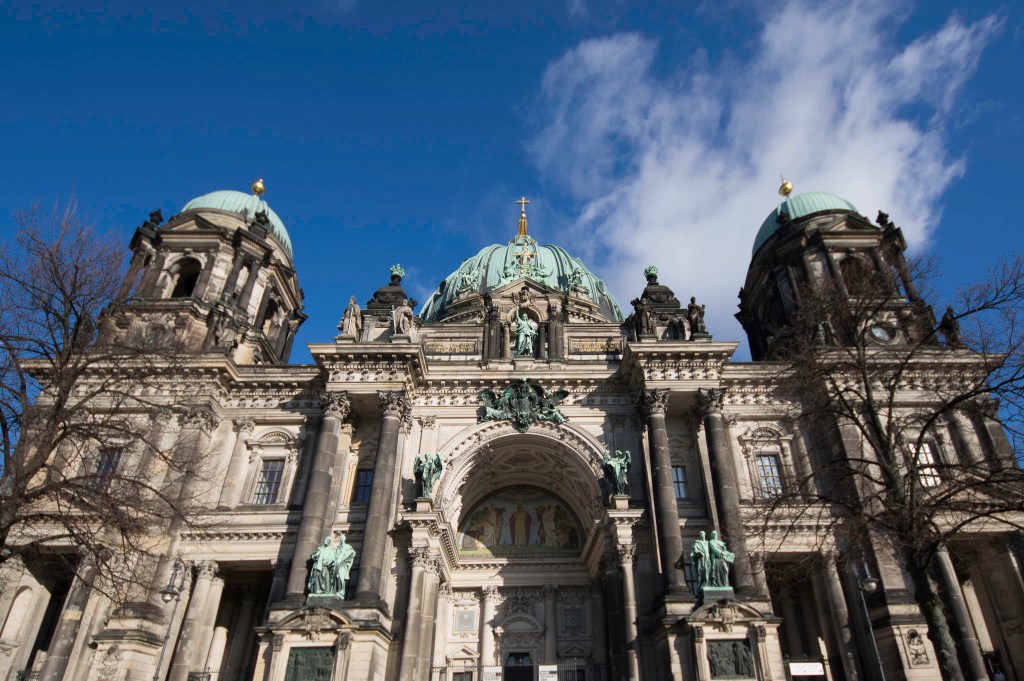
Front facade Berlin cathedral
The current building by architect Julius Raschdorf is the last in a long line of royal chapels and churches that stood more or less at the same spot. After the Brandenburg elector Joachim II rooted the Dominicans from their medieval simple brick church, he started upgrading it to a proper cathedral and royal burial grounds. Funnily enough just a year after it was finished in 1535, Joachim converted to Lutheranism. In the following 100 years or so, various creeds fought for dominance, although I’m pretty sure these conflicts between Lutherans, Reformed and Calvinists were not entirely about religion, but about the distribution of power as well.
In 1750 then aforementioned Frederick had this building replaced once again to mirror the growing importance of Prussia and his house of Hohenzollern. His regular architect Georg Wenzelslaus von Knobelsdorff (I love that name, and use every opportunity on my tours to say it out loud) together with his Dutch counterpart Johann Boumann designed a pretty businesslike structure at the exact spot where the contemporary cathedral now stands. The general shape is more rectilinear than square and on paintings it looks more or less like any church from that time and not even especially rich.
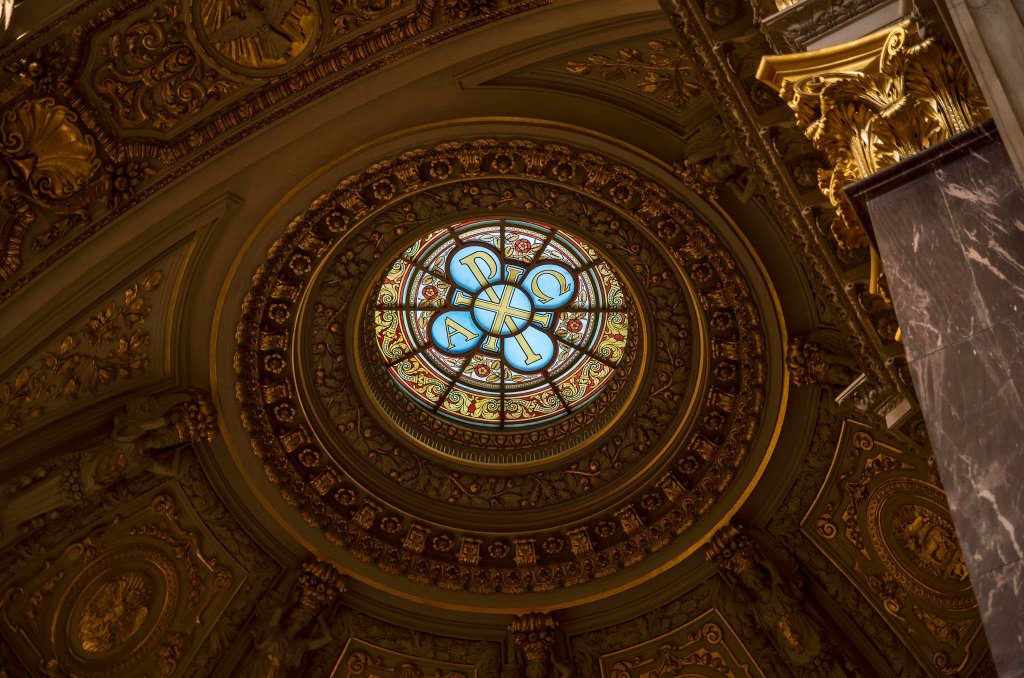
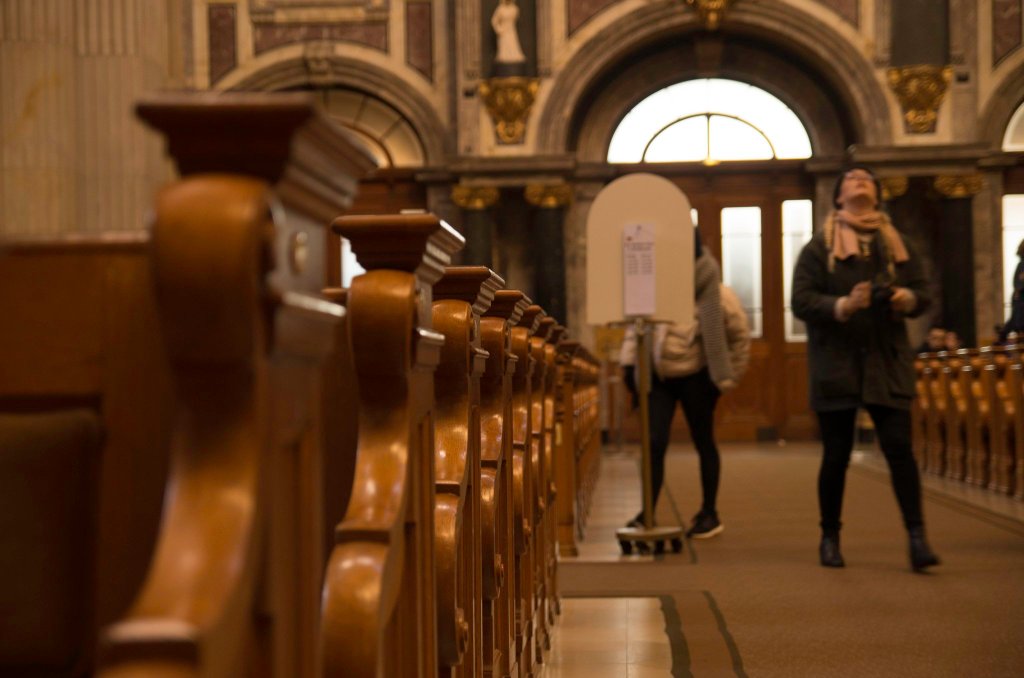
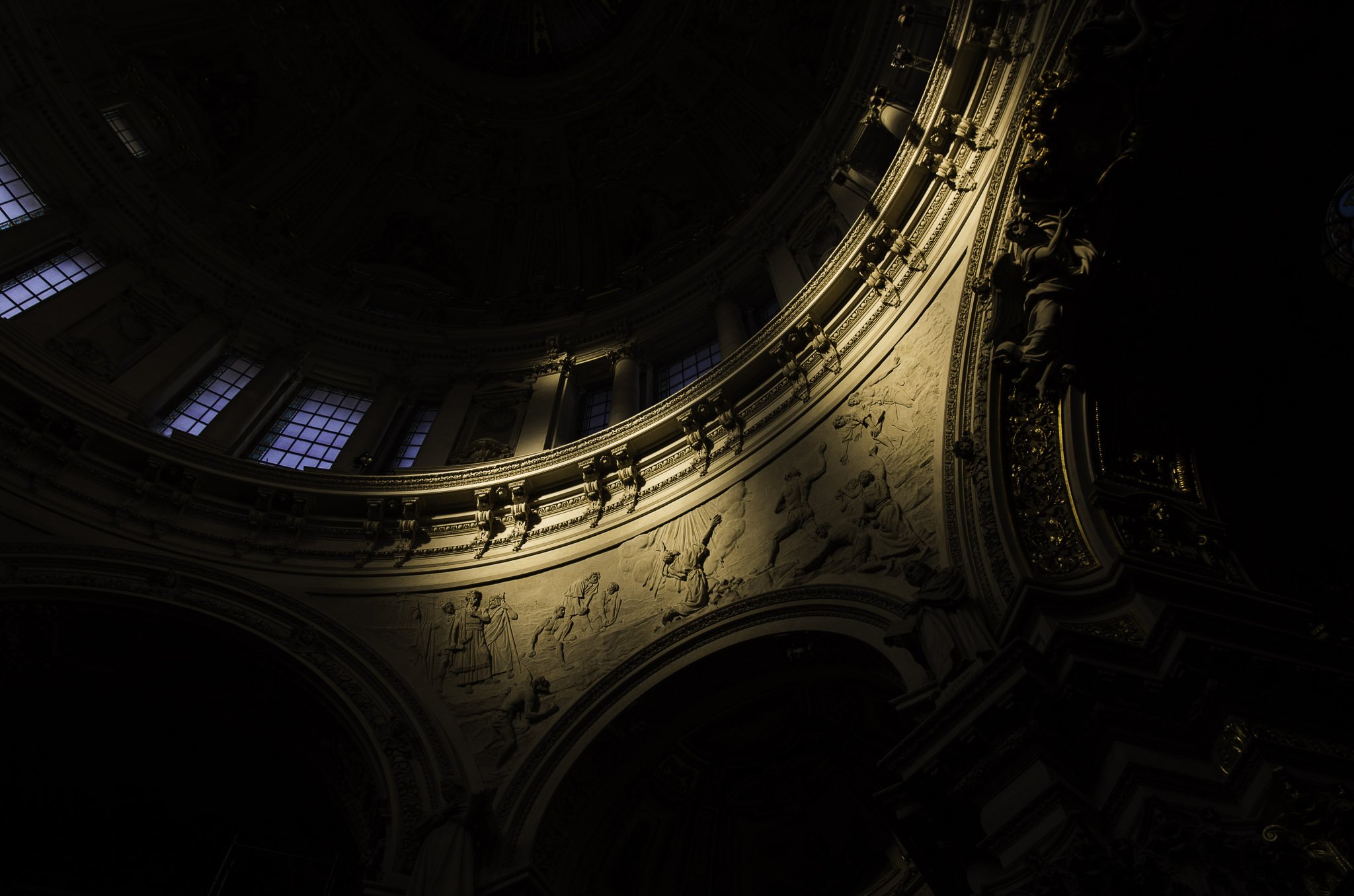
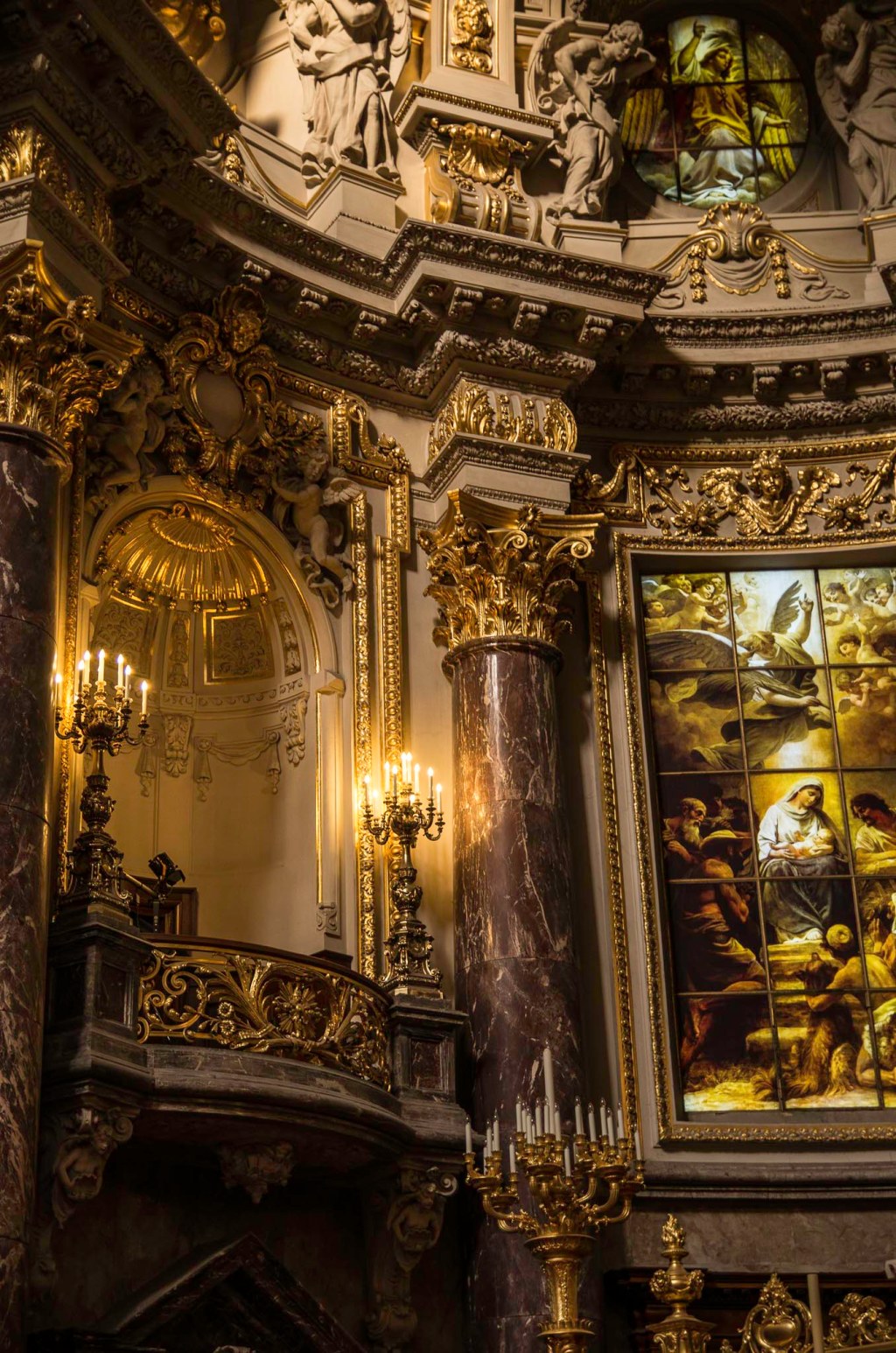
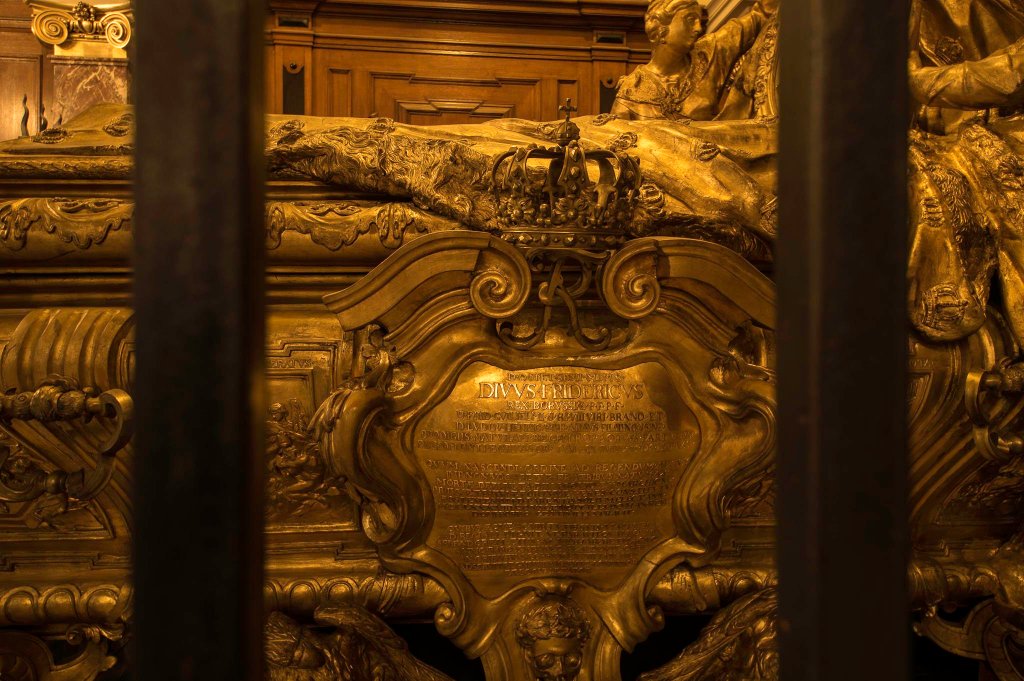
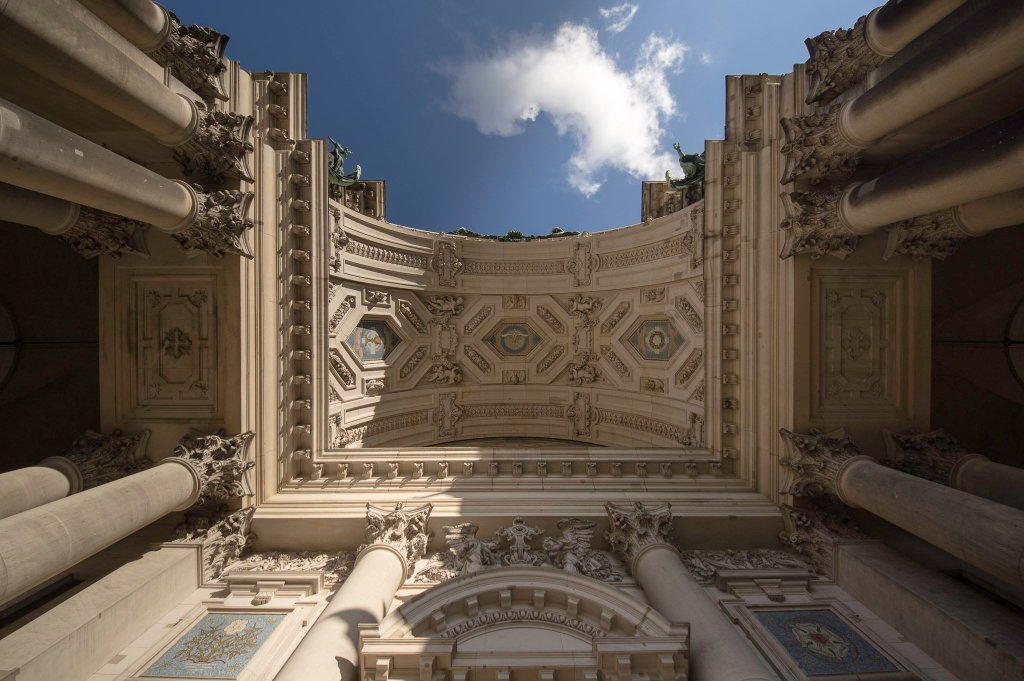
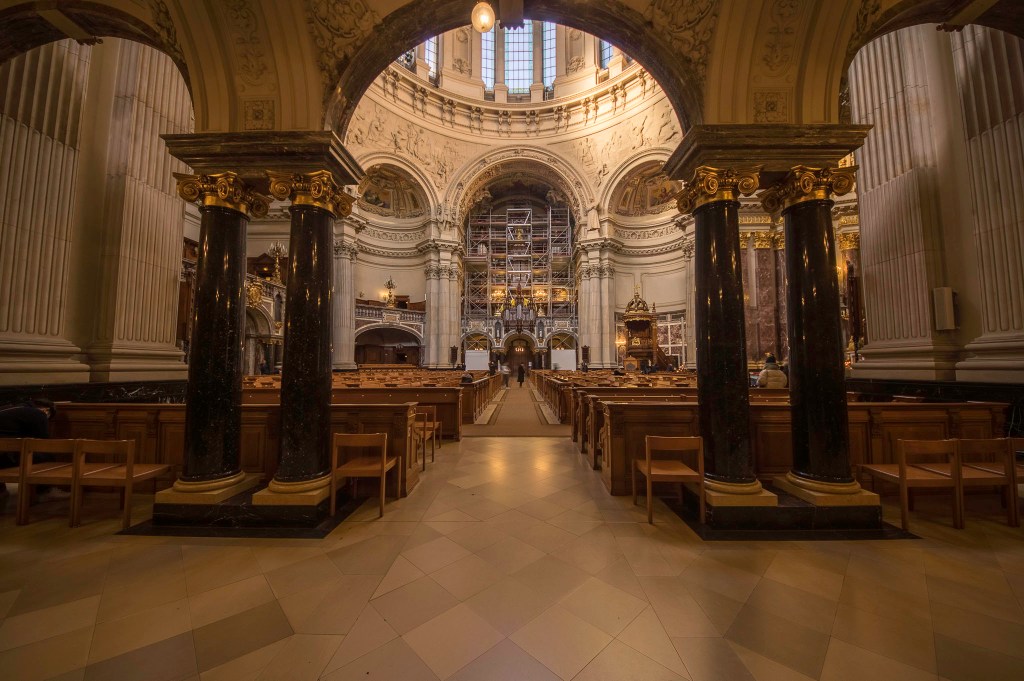
Altar Berlin cathedral
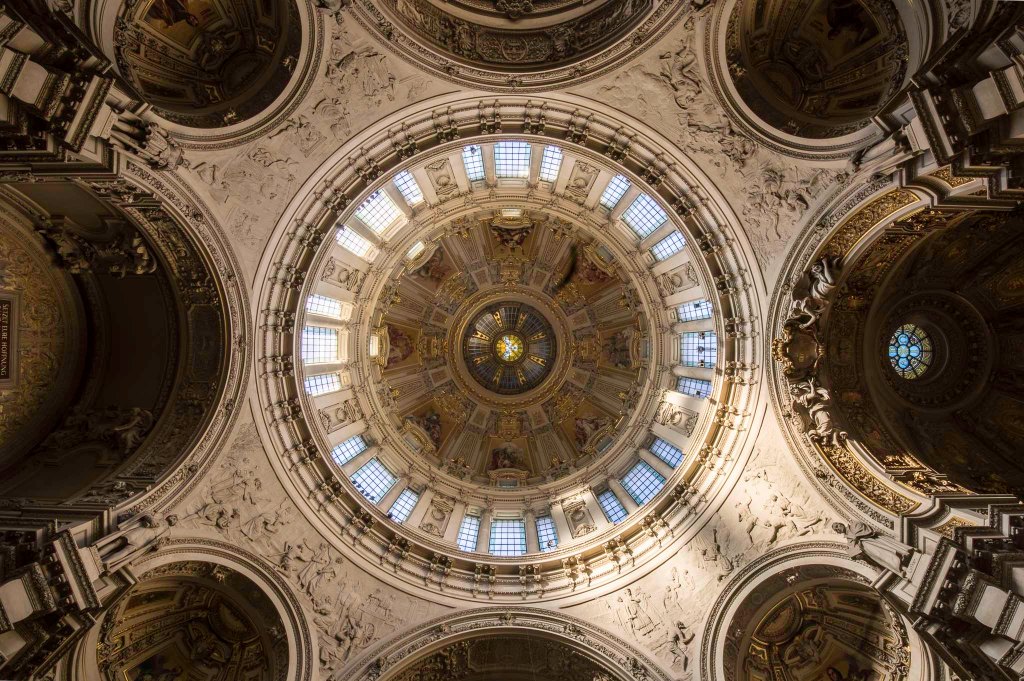
The cupola of Berlin cathedral viewed from inside
It’s not really clear why they had to redecorate again just 60 years later, but beginning 1816 Karl Friedrich Schinkel was tasked with applying a touch of modernity. Absurldy though that meant Classicism at the time and like most other buildings by Schinkel the cathedral soon looked like Greek temple with some added towers and cupolas. Schinkel’s importance for how Berlin looks can’t really be overstated. He wasn’t only the king’s go-to architect and responsible for buildings like Neue Wache, Schauspielhaus or the monument atop Viktoriapark (he even designed the iron cross after which it was shaped and that gave Kreuzbergs its name), he was the first who created lists of structures and monuments worth saving – until then the idea to keep something old, even if you had the money to replace it with something modern, seemed ridiculous. New was good, old was bad until Schinkel came along. His taste and idea of architecture was so powerful, that while he was the director of the royal building commission and had to approve all large-scale construction, a lot of other architects copied his style to make sure, he wouldn’t scribble on their drawings and send them back with his ideas of “improvement”. In Berlin there is a saying about him that only translates poorly to English. “Hach, in jedem Winkel steht ein Schinkel”, meaning there’s one of his buildings wherever you turn. In Berlin and Potsdam alone are some 50+ projects he was responsible for.
Side chapel and stairways of Berliner Dom
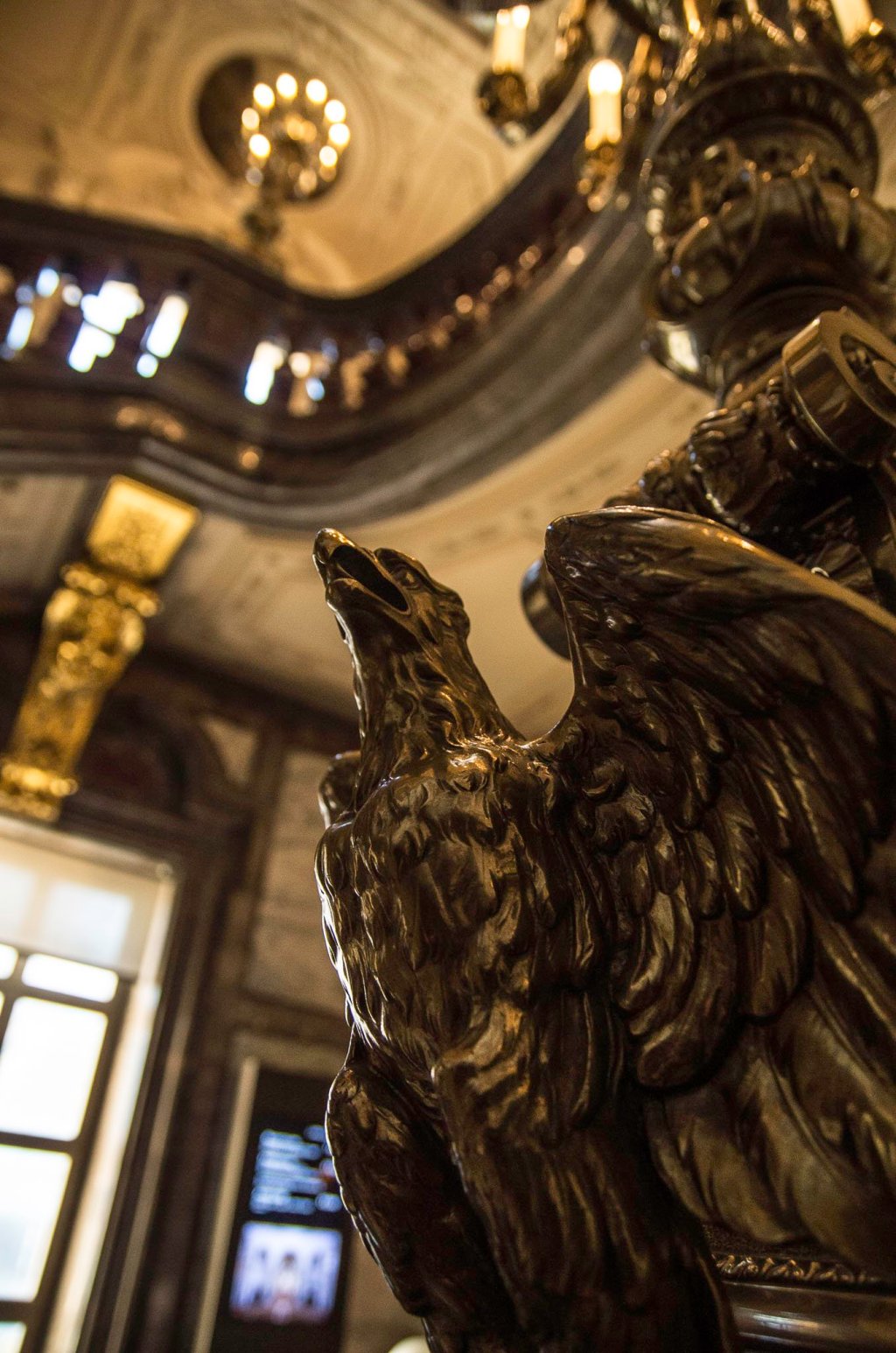
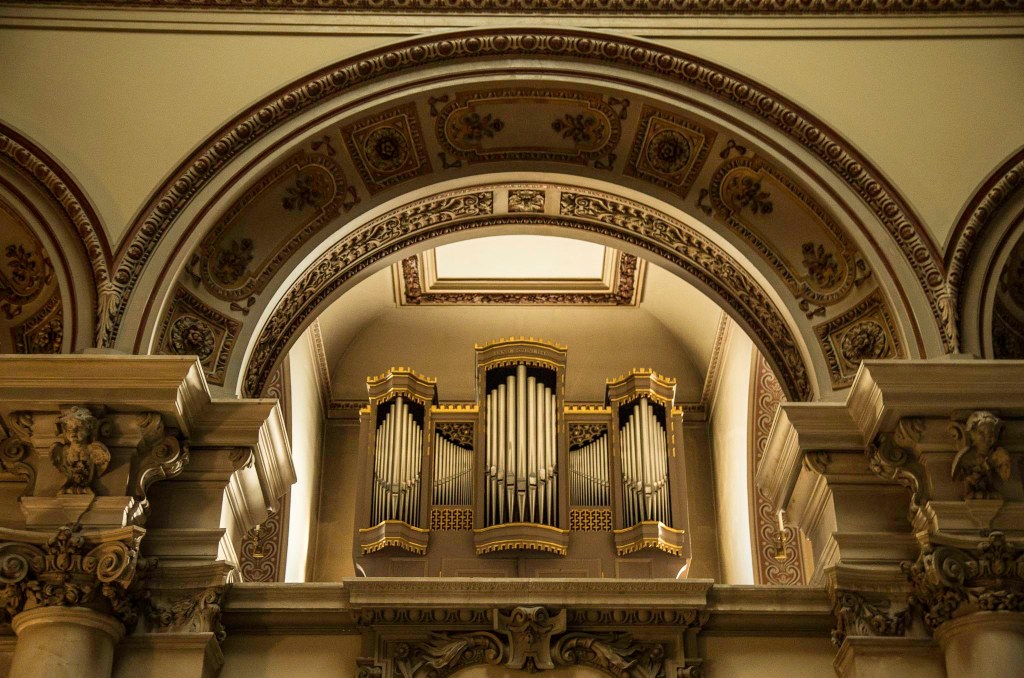
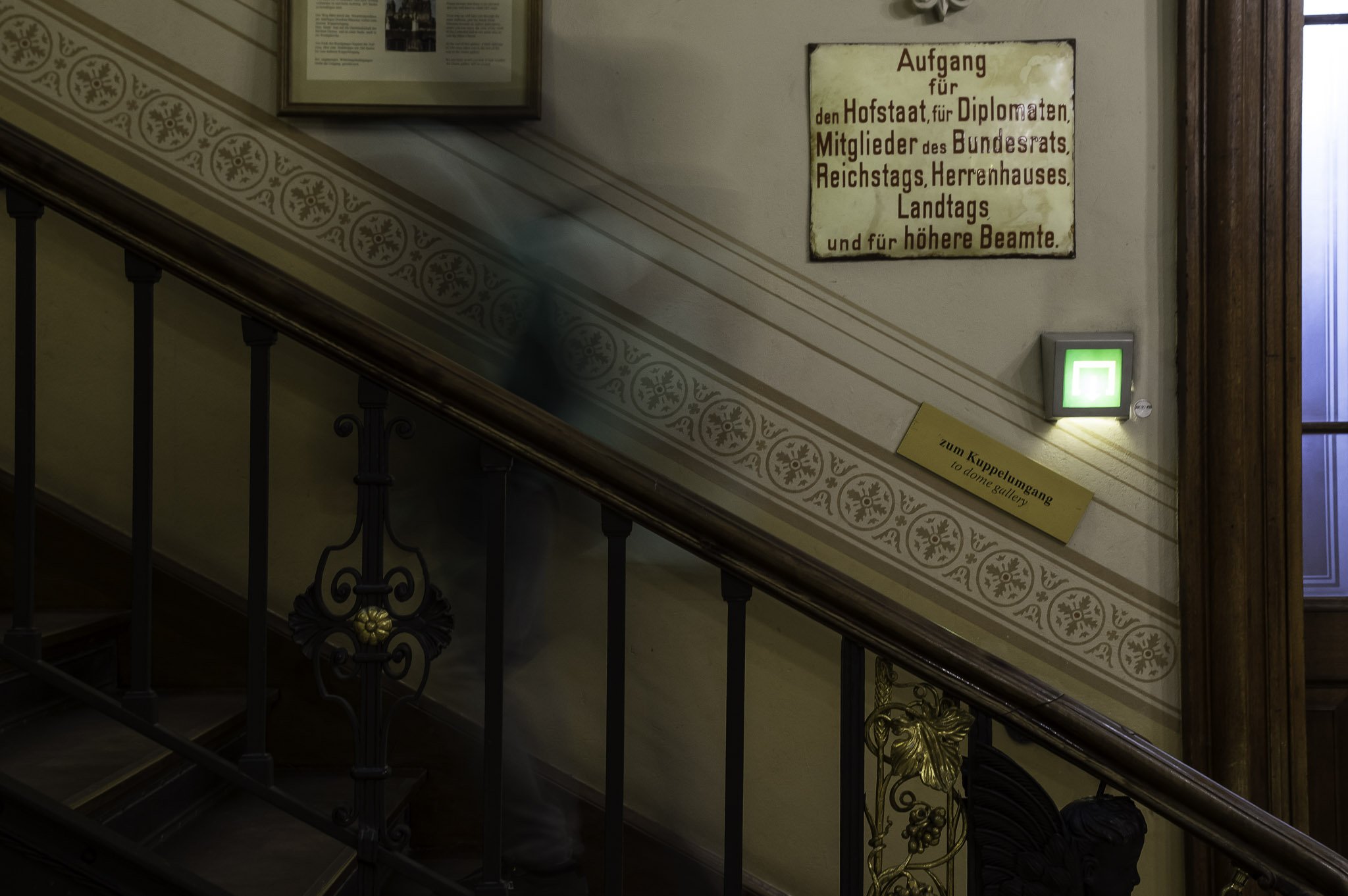
There were dedicated stairs for VIPs like diplomats and members of parliament.
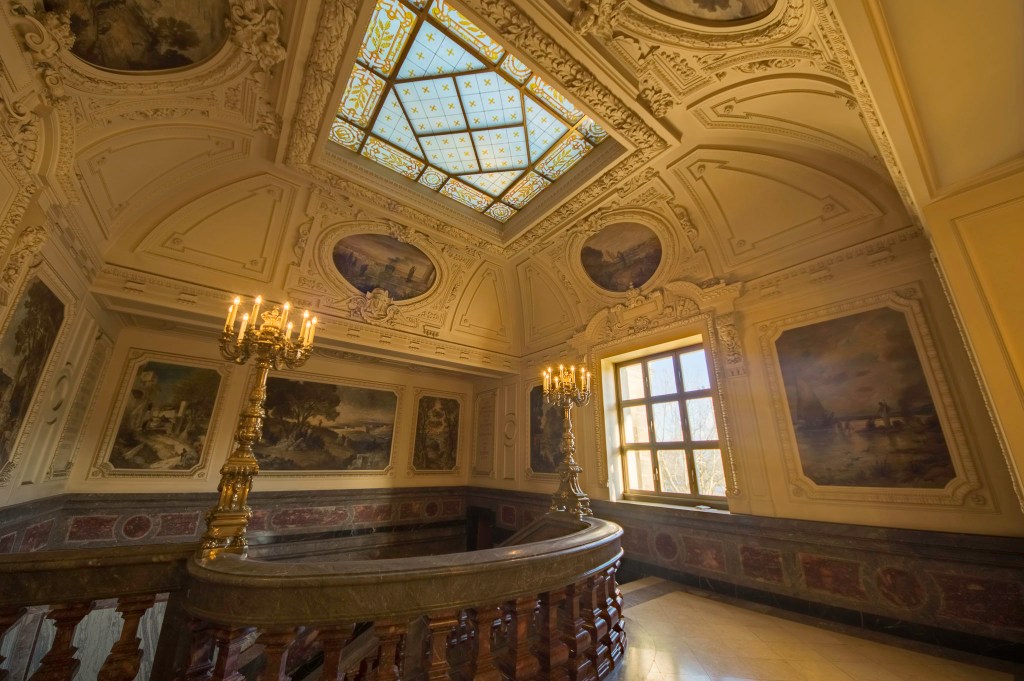
Richly decorated staircase inside Berlin cathedral, not so hard to imagine why people often confuse it with a Catholic cathedral
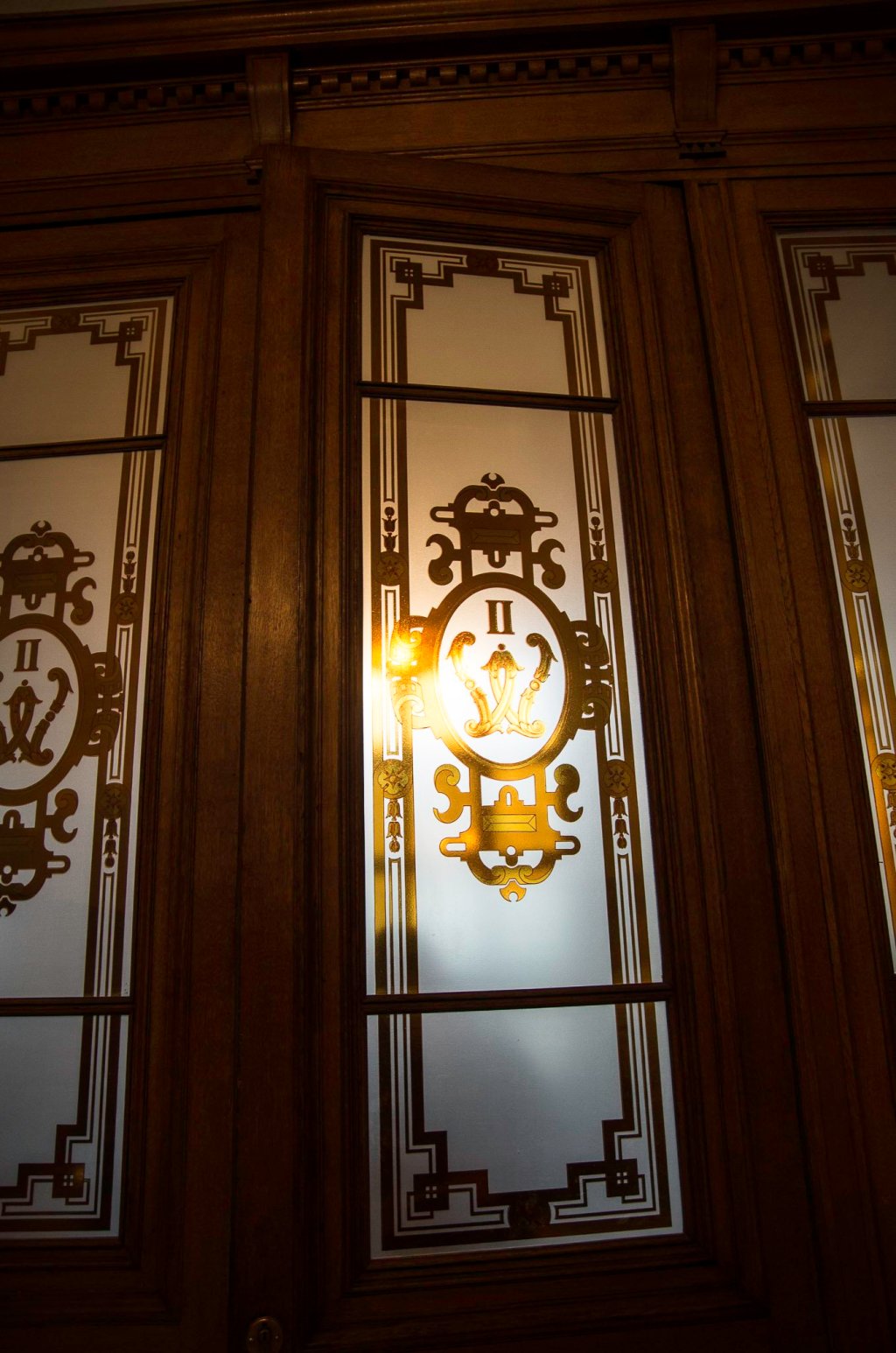

Staircase Berlin cathedral
Just a few decades later king Frederick-William IV started to think about the next replacement of a church that in his view was way too plain to properly represent the power and might that is Prussia. If you’re starting to see a pattern here, you are right, most of our kings and electors had a tendency to be somewhat megalomaniac and a passion for overspending that proved problematic from time to time. In this case though, it was the revolution of 1848 that put a temporary stop to all plans. In the following years parliament took control of the state’s finances and they weren’t really interested in financing Fritz’ vanity. On top of that the castle itself got a new central dome that covered a gorgeous royal chapel, so the whole project didn’t seem that urgent anymore.
When Germany finally became a nation state (Deutsches Reich ~ German Empire) it was thought that it needs a proper, big church that doesn’t have to hide and can play with the big boys in other European capitals, St. Peter in Rome, Notre Dame in Paris or St. Pauls in London. Raschdorf’s first design dates from 1885, but only after William II took the throne the project gained traction and construction started in 1895 with plans to open in 1900. At this point you won’t be surprised to hear that it took a bit longer (and probably went massively over-budget) and the new cathedral was opened in 1905. They kept the altar, designed by Schinkel student Stüler, and the underground burial chambers for the royal family.
Crypt and viewpoint at Berlin Cathedral
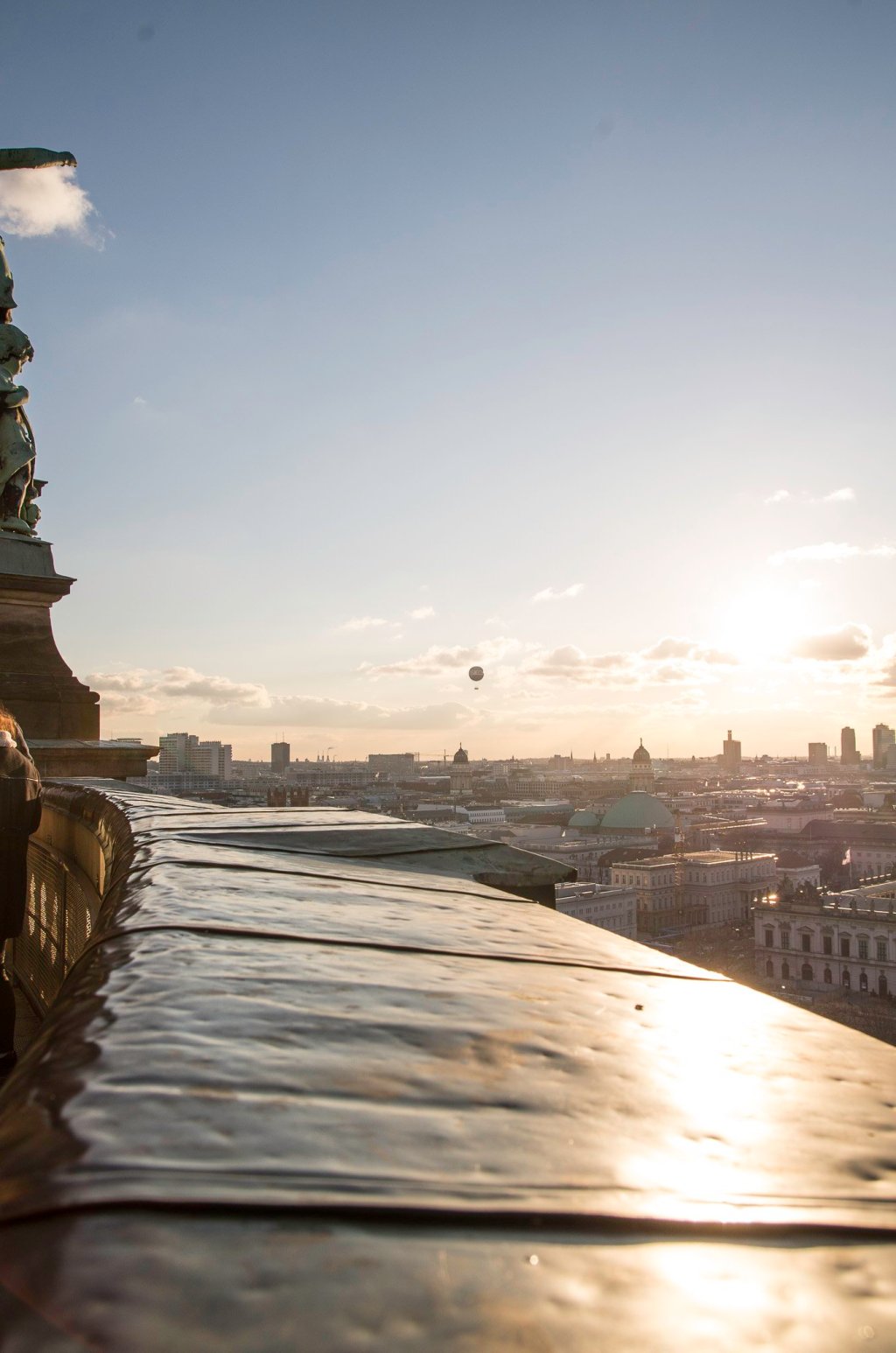
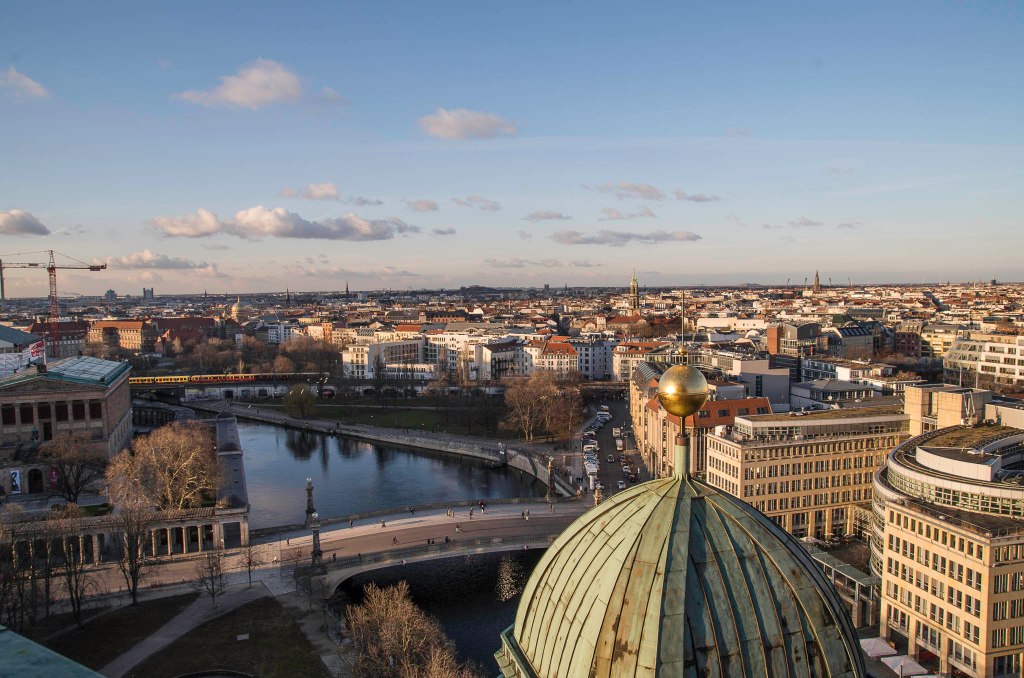
The top of Berlin cathedral offers stunning views of the city

On the roof of Berlin cathedral
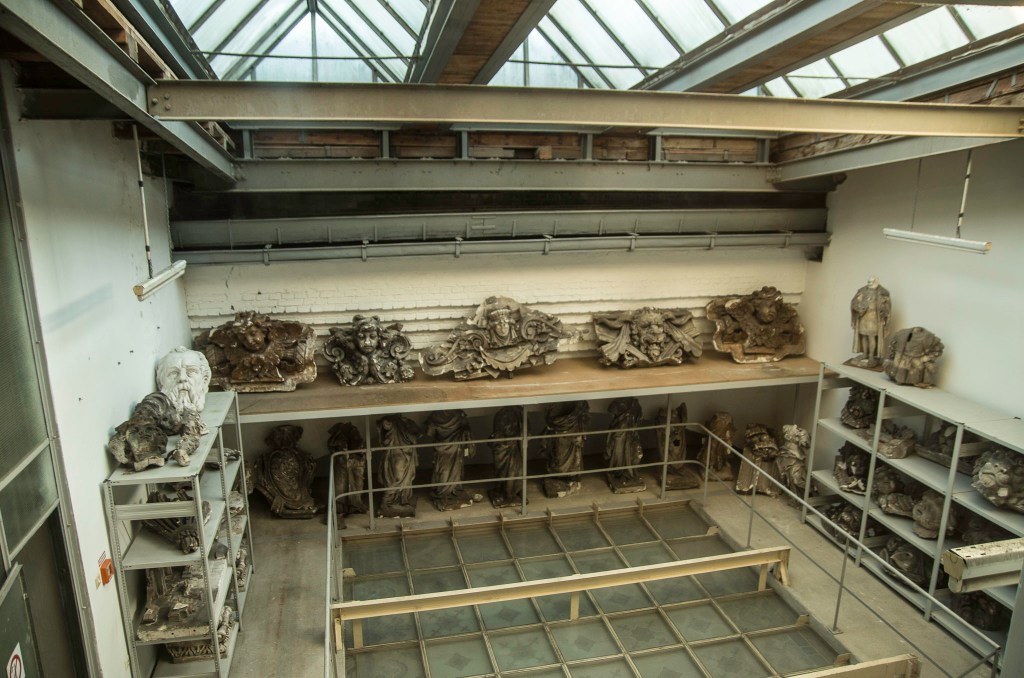
Stucco parts preserved inside Berlin cathedral
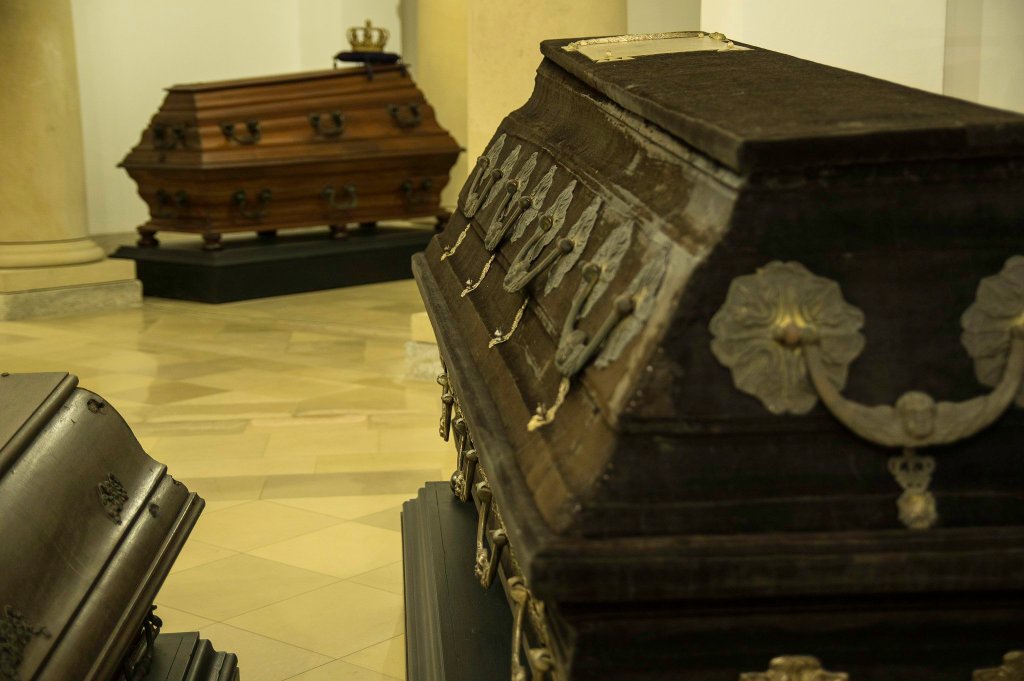
Inside the crypt of Berlin cathedral the mighty Hohenzollerns still lie
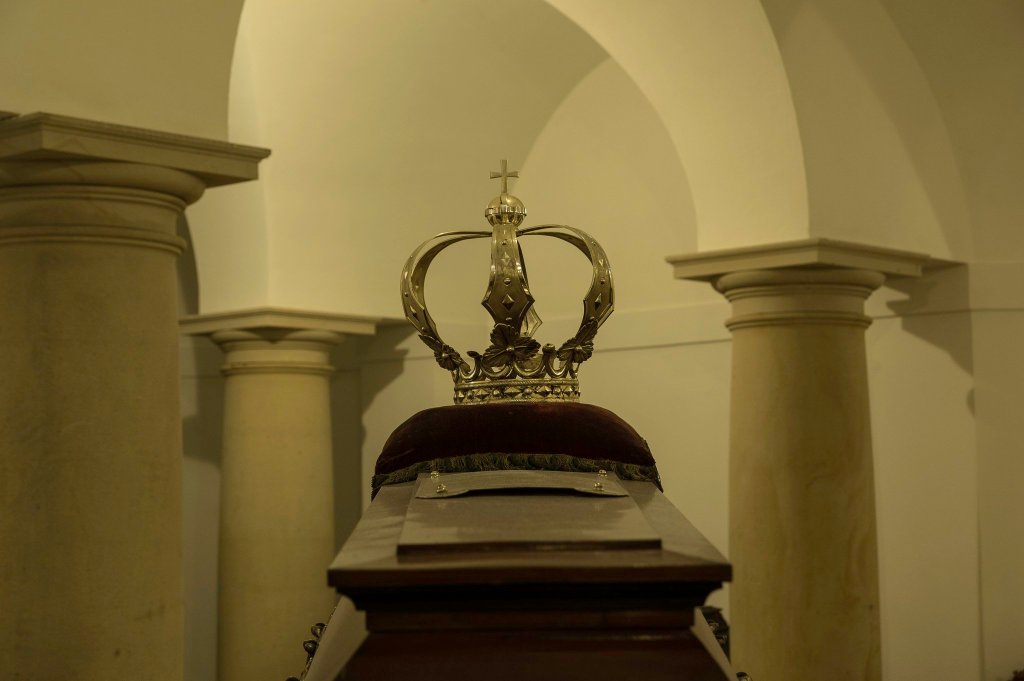
Detail from the crypt inside Berlin cathedral
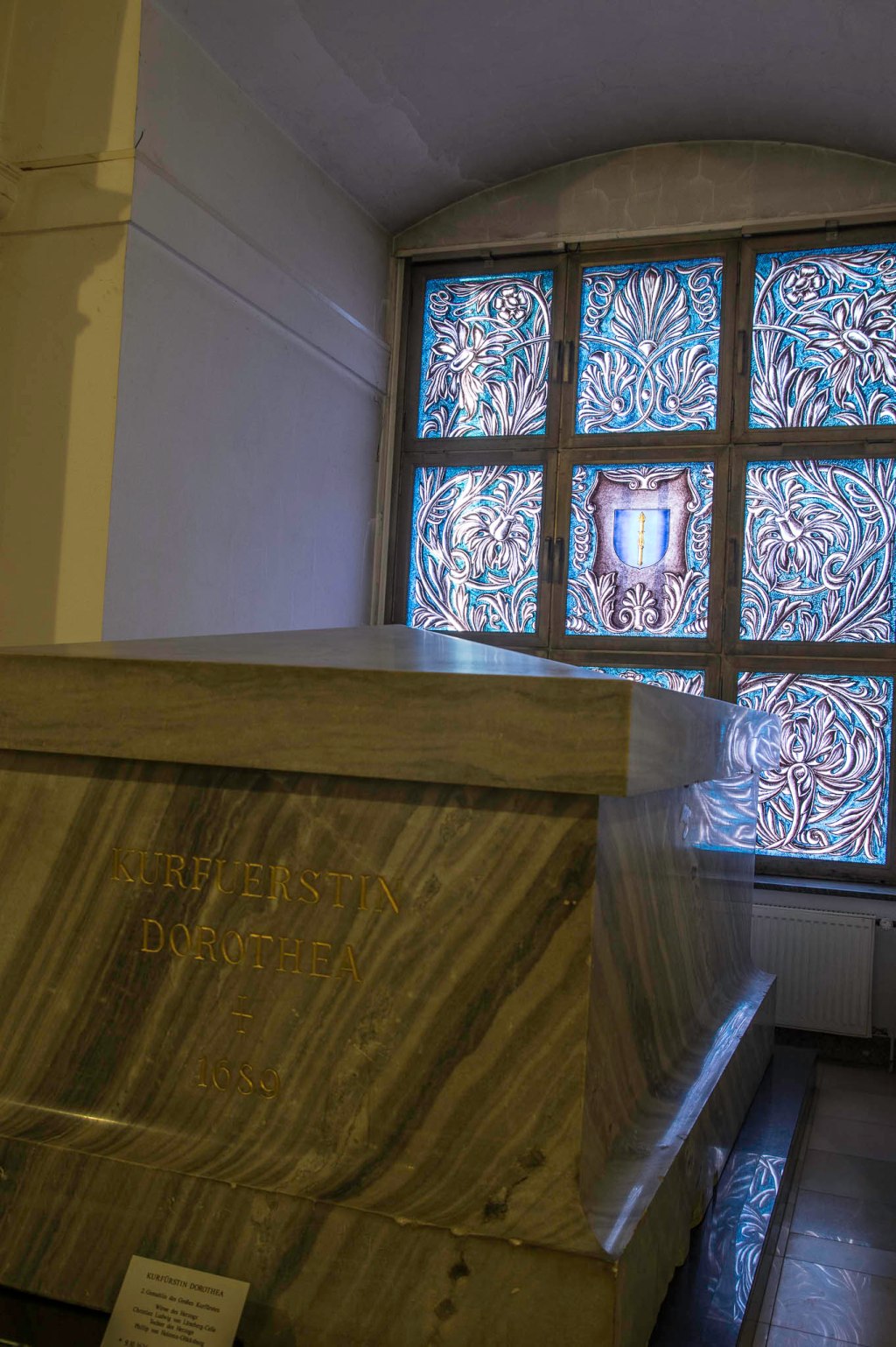
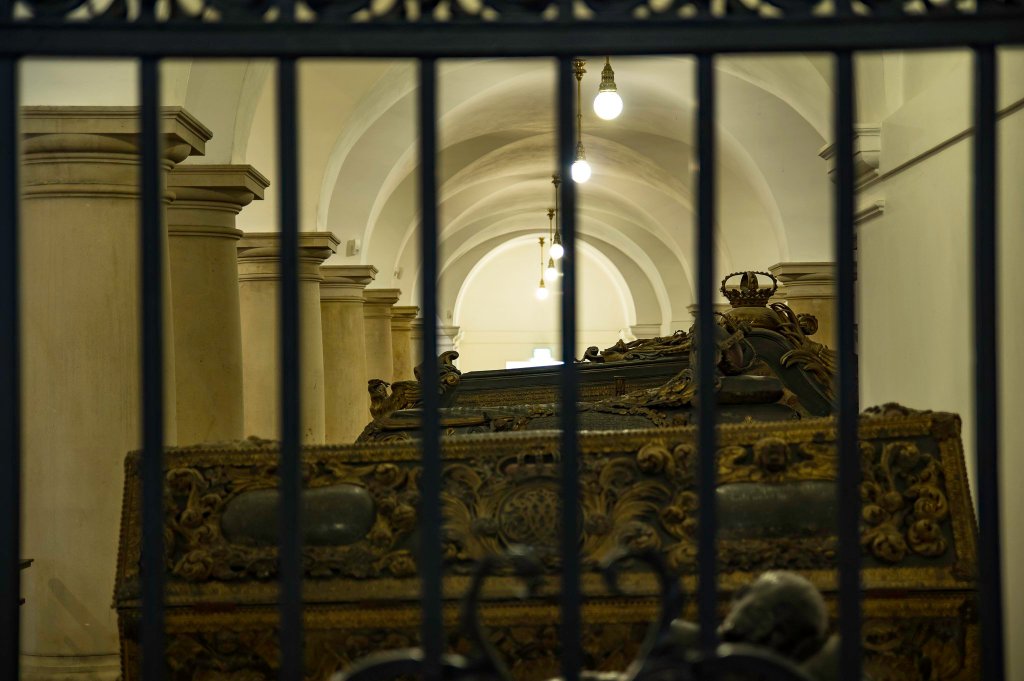
Of course during WW II the Dom became a tempting and visible target for allied bombers and finally in May ’44 the cupola was hit by an incendiary that alighted the wooden casing. Firefighters couldn’t get to the fire and after a while the roof lantern (the thing that sits atop the cupola) crashed downwards damaging large parts of the crypt below.
It took until 1975 for the GDR authorities to begin reconstruction, religion after all was opium for the masses and this was the church of the hated Hohenzollern monarchy. So, first they got rid of the large apsis (Denkmalkirche) in which services were held since the war and which doubled as the honour hall for that dynasty. The main cupola was restored in its original proportions while the four smaller side-domes were 16m smaller when they were finished and none of them retained there original design and the lanterns. The only exception was the large golden cross on top of the biggest dome in the middle.
In the 1990s there were attempts to go back to the original design, which as it turned out was not possible because they only ever made the cathedral a protected national monument after the reconstruction in the 70s and 80s. This is something that happened quite a lot in Berlin, other examples are the opera and St. Hedwigs cathedral, both have been protected at a moment when the GDR already finished extensive, if unfaithful reconstructions. Finally in 2006 the cross had to be replaced because under the gold the metal started to rust and became unstable. Today that cross is standing on a cemetery that used to be part of no-mans-land in Luisenstraße. The new cross was installed in a rather spectacular fashion by a helicopter – and it is covered in about 2.6 kg of leaf gold – so if you have a clever idea of how to get it off there without being caught, we’re all game.
Info for your visit of Berliner Dom/Berlin cathedral
Where: Am Lustgarten (at the end of Unter den Linden)
Next public transport: Alexanderplatz or Hackescher Markt
When:
Mon – Sat 09:00-19:00
How much: 7 € as a contribution towards upkeep, includes three minors (<18)
Audioguide 4 €
Tipps: take the climb to the top. The walkway offers spectacular views on all parts of Berlin from over 50m.

